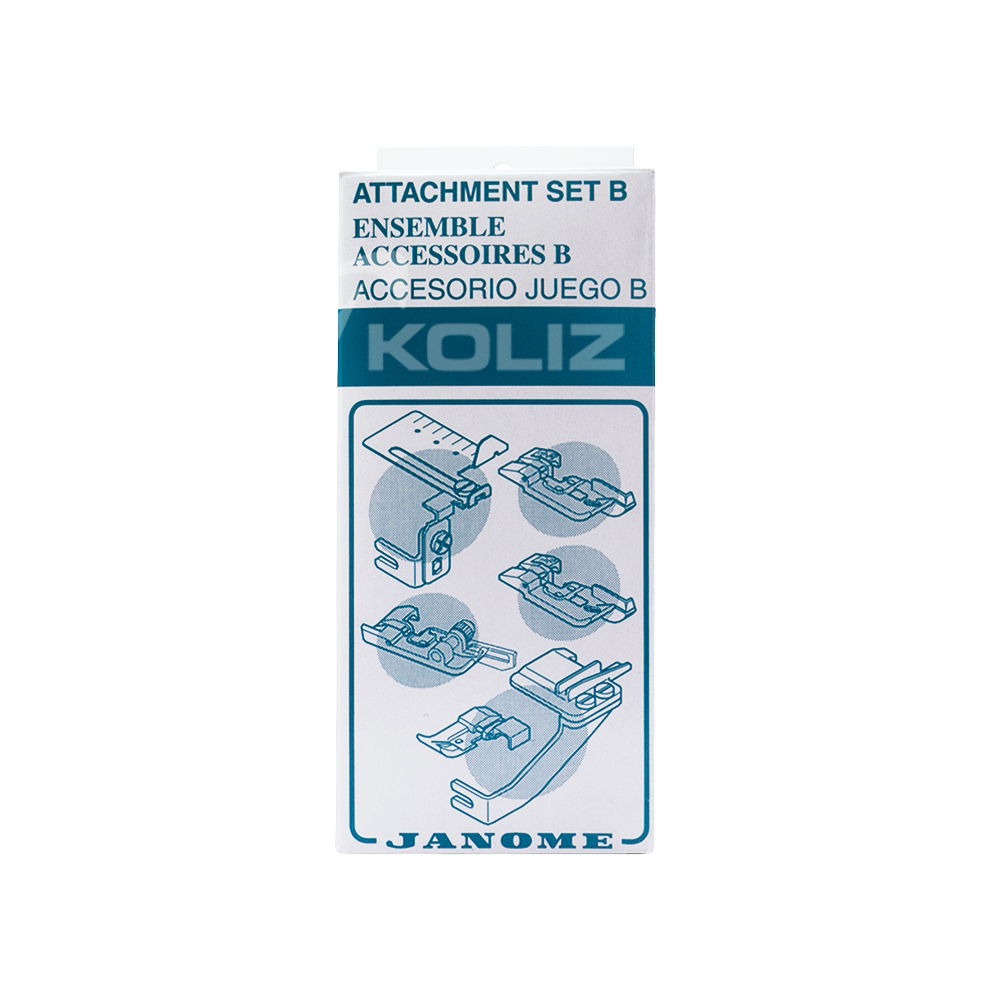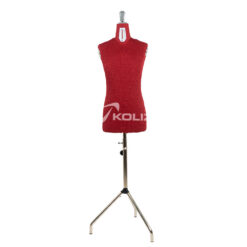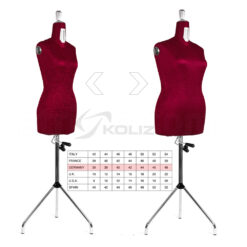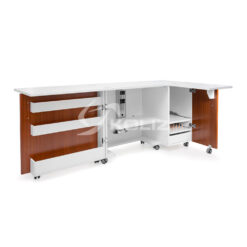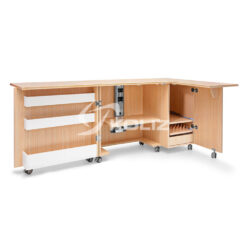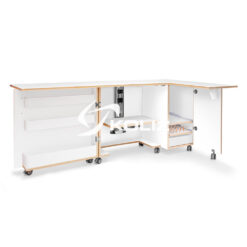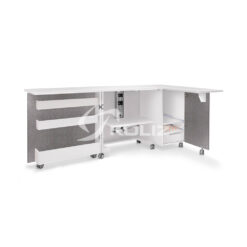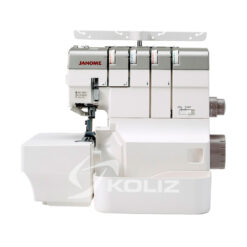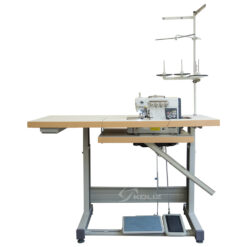Janome Serger Attachment Set B
34.00€
Only for Janome overlock machines with double chain stitch function.
The attachment set contains: blind stitch foot, cloth guide, beading kit (beading foot & beading attachment), 2 piping feet (sizes: 3 mm and 5 mm).
Blind stitch foot:
Blind Hemming is never an easy technique and demands practice and patience. However, it is possible to use your overlocker to blind hem using a blind hem foot which is equipped with a guide to help keep your stitching straight.
Features:
- Use for creating blind hems.
- Guide to keep stitching straight.
- Gives your projects a professional finish.
- Category B.
Cloth guide:
The cloth guide is useful in a variety of sewing situations. It is especially useful if you match the lines on the cloth guide with the line on the needle plate.
Features:
Without the upper knife:
- Helps to sew constant width seams without the knife.
- Helps when flat-lock serging with the decorative thread and when pintucking.
With the upper knife:
- Provides extra guidance for constant width seams on large pieces of fabric.
- The scale on the cloth guide acts as an extension of the scale of the needle plate.
Beading attachment:
This handy attachment is used to sew a string of beads on to the edge of the fabric. The set contains two items: the beading foot and the beading attachment. Once the foot is placed on your overlocker, then the metal arm with a guide can be screwed into place. The beads run over and through the beading guide and under the beading foot.
Features:
- Popular for bridal wear, evening wear, smart/casual or craft, the beading foot is a must for your sewing box.
- Provides a unique and fancy decorative edging.
- You can use 1 mm to 4 mm beads.
Piping foot:
A set of 2 feet. The groove on the foot securely holds cording close to needle for making or inserting piping.
Features:
- Piping often accents couture fashions.
- For making your own piping using narrow cording (3 mm) & medium weight cording (5 mm).
| Country of origin | Taiwan |
|---|
